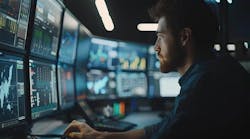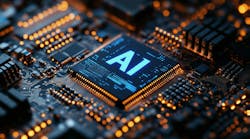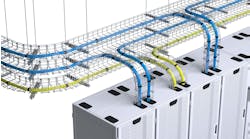Data Center Evolution: Which Model is Right for Your Organization?
In this edition of Voices of the Industry, Service Express Director of Infrastructure Solutions Chad Peters outlines four data center models and the advantages and challenges of each.
Chad Peters, Director of Infrastructure Solutions, Service Express
For decades, the traditional on-premises data center was the standard for IT infrastructure. Long, dark hallways stacked to the ceiling with server racks — in other words, how a data center was “supposed” to look. While you can find on-premises data centers almost everywhere today, like all other forms of technology, it’s continuously evolving.
Around 2008, a converged data center structure emerged. This structure still involves separate servers, storage and networking, but they’re sold as one solution that has been configured for interoperability to reduce compatibility issues that occurred in traditional data center environments.
Source: Service Express
In the 2010s, hyperconverged data centers came onto the scene with one piece of hardware for everything. The current data center evolution is the cloud, where some data and information are housed outside an organization’s own infrastructure. What’s unique about the data center evolution is that one solution doesn’t necessarily negate the use of or need for another.
Let’s examine the specifics of each to help determine which solution or combination of solutions is best for your organization’s needs.
Traditional On-Premises Data Center
The traditional on-premises data center structure involves separate server, storage and networking equipment. This type of data center has stood the test of time and is relatively familiar. Although IT leaders are considering how to move elements of their data center off-premises, Gartner Distinguished VP Analyst David Cappuccio says, “Continued investment in an older, more traditional data center may seem contradictory, it can yield significant benefits to short- and long-term planning.”
Source: Service Express
Advantages
- Customization of vendors: Choose multiple partners to build a customized solution based on your needs.
- Control: Your team is in control of where the equipment is located, how it’s managed, and your level of security.
- Compliance and compatibility: If the hardware requires specific applications or operating systems, you have control over the compliance and compatibility.
Challenges
- Complex support: Multiple vendors can lead to support complexities and multiple maintenance and service level agreements.
- Slower issue resolution: When an issue arises, vendors may have to work together to develop with a solution leading to longer response and resolution times.
- Lifecycle management challenges: Upgrading an operating system, applying a patch or downloading new firmware, could result in incompatible systems.
Converged Data Center
The converged data center is sold as an all-in-one solution housed together. It can be easier to manage because everything is contained together with a single point of contact.
Source: Service Express
Advantages
- Tested end-to-end functionality: Equipment has been configured and tested to ensure interoperability and compatibility.
- Interconnected components: A single interface is typically used to launch configuration and management tools for each device.
- Data center space: You have the option to downsize and use the space for other priorities.
- Quicker deployment: Deploy faster because components are designed to work together right out of the box.
Challenges
- Locked-in: A single solution may offer less flexibility based on higher costs to add additional capacity, CPU and memory.
- Interoperability issues: This solution may not support legacy applications or operating systems.
- Difficult to update: Device updates are typically done via one deployment package meaning individual components may be exposed until that package is available.
Hyperconverged Data Center
A hyperconvered solution leverages software to provision your resources by combining your network, storage and server equipment into one piece of commodity hardware.
Source: Service Express
Advantages
- Consolidated management: Just like with a converged solution, in a hyperconverged solution one pane of glass does everything.
- Convenience and service: With one piece of hardware for your storage, compute and network (needs/demands), the complexities of multiple interfaces, tools and vendors is removed for a more convenient and easier customer experience.
- Easy to scale and deploy: Easily scale and deploy by adding more nodes to a cluster.
Challenges
- Locked in: If that one vendor doesn’t meet your needs, you could be stuck.
- Node scaling: A hyperconverged solution allows for more scalability, you could be paying for things you don’t need. If you only need more memory, you’re getting compute and storage you don’t need.
- Interoperability issues: Moving to hyperconverged means implementing a layer of virtualization.
Cloud
Last, but not least, the cloud. Think of a cloud data service as a remote version of your data center. An organization’s data and applications are hosted by either a private or public cloud services provider. Even though it’s possible for your entire data center to exist on the cloud, it functions best when used alongside one of the other three solutions.
Source: Service Express
Advantages
- Pay-as-you-go: Teams only need to pay for what they need when they need it.
- Flexibility: Simply ask your cloud provider to turn on resources when needed. Conversely, you can turn off service when it’s not in use.
Challenges
- Security: Security updates are handled by your cloud provider, so you have less control over it.
- No physical access: With your applications hosted on the cloud, you no longer have physical access to the hardware. You are reliant on the redundancy, and integrity of the providers’ data center — along with their support and technical skills — to ensure uptime.
- Interoperability issues: This con should sound familiar. Cloud solutions may not work with your proprietary or legacy applications.
- Unpredictable costs: It could be more expensive long term because of unforeseen costs that are unpredictable.
The right option for your organization
While spending on data center systems fell in 2020 due to the pandemic, it has since rebounded. Spending is expected to reach $207 billion in 2022 signaling continued investment in data center technologies.
As you and your organization determine which data center evolution — or combination of evolutions — is right for you, consider your priorities. We recently surveyed more than 700 IT professionals who revealed their top priorities include strengthening security, improving internal processes, and reducing costs.
If security is your top priority, you may not be ready for the cloud. If reducing costs is your top priority, think about moving away from a 100% on-premises data center. There’s no one-size-fits-all solution for a data center. Most organizations end up with a hybrid solution. A little bit of on-premises, a dash of hyperconverged, and a sprinkle of the cloud.
It’s a bit like a recipe. Switch up your ingredients by adding more of one thing and less of another. The perfect mix is what works best for your organization’s needs, applications and priorities.
Chad Peters is Director of Infrastructure Solutions for Service Express, a global data center solutions provider that helps IT teams control costs, optimize infrastructure strategies and automate support.






